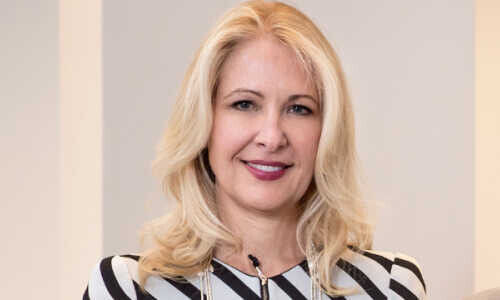Credit Suisse could have avoided the Greensill scandal by consistently applying risk management across its main units. The responsibility lies with top management and Lara Warner.
Zurich-based Credit Suisse was prudent in 2020: it reserved more than $500 million in the first quarter against future credit risks. As Covid-19 spread and was declared a pandemic, the Swiss bank successively lifted these provisions to 1.1 billion Swiss francs ($1.18 billion).
The caution of CEO Thomas Gottstein and top risk manager Lara Warner was founded: the worldwide shutdown for much of the second quarter disrupted supply chains in virtually every nook and cranny of the global economy, squeezing liquidity for companies.
Exemplary Here, Failure There
Credit Suisse raised its credit provisions over 2020 by the book: its risk management largely worked the way it is intended to. So how did the Swiss bank's risk managers under Warner get it so wrong on Greensill, especially after watching GAM's problems?
The money flow that its funds draw its returns from relies on the very supply chains that were severely limited last year. Credit Suisse's risk management spotted the problem with supply chains beautifully in one case and missed it – with disastrous consequences – in another.
How did Credit Suisse provision nearly $1.2 billion against its clients defaulting while at the same time taking on far more risk in the supply chain funds, lifting their volume from $7 billion to more than $10 billion last year alone?
Concentration Risk Overlooked
The Swiss wealth manager hasn't been able to give an explanation thus far. A mid-2020 review of the funds merely saw Softbank unwind a knotty and circular relationship between Greensill and Credit Suisse.
The billions in Credit Suisse fund money that via Greensill was financing British industrial magnate Sanjeev Gupta, as well as inadequate insurance, escaped the attention of Gottstein and Warner. The result is likely to be a slew of class-action lawsuits, regulatory action, and hefty losses.
Red Flags Ignored Or Overruled
The bank also needs to explain how it came to grant a $160 million bridge loan to Greensill Capital last October, reportedly over objections from its own risk managers. It is also difficult to square how Eric Varvel still touted the supply chain funds as a key part of Credit Suisse's asset management offering after Germany's regulator had begun looking into Greensill's Bremen-based bank.
As Credit Suisse's top risk manager, Warner oversees every type of risk from cybersecurity, credit defaults, the bank's reputation, anti-money laundering, and climate risks. The risk management department is fairly extensive as a result, both in terms of staffing as well as systems for monitoring processes and functions.
In The Dark Until The End
The bank's separation of asset management under Ulrich Koerner to clean up isn't enough. It isn't clear why Credit Suisse waved through the supply chain funds and cooperation with Greensill Capital.
Warner, who has been with Credit Suisse or CSFB since 2002, said recently she ultimately approved the $160 bridge loan but didn't know until February that the bank's Greensill funds were about to lose their insurance coverage.
The 53-year-old U.S.-Australian banker was tapped for top management by ex-CEO Tidjane Thiam. Her role in the Greensill debacle, which has eclipsed Credit Suisse's investment bank as well as wealth management arm, isn't yet clear.



































